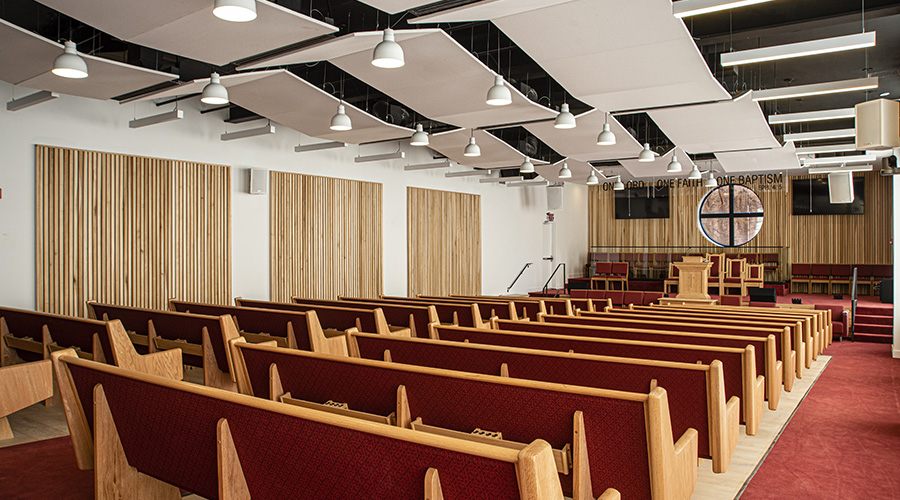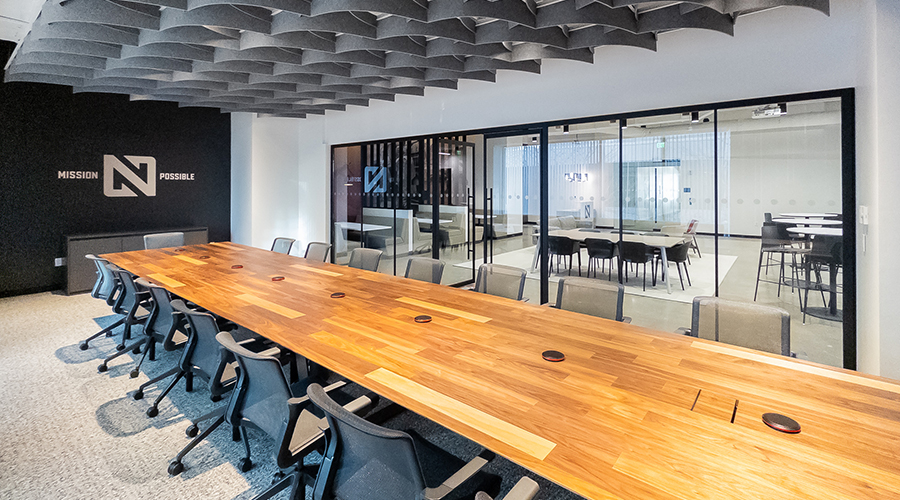Outlook
Four wireless applications offer lessons for facility executives
For many facility executives, wireless communication networks promise a range of potential benefits — but pose even more questions to be answered before those benefits can be realized. Nevertheless, an increasing number of facility executives are moving ahead with wireless initiatives, and the work they are doing is helping to answer questions from others in the field.
At the University of Wisconsin — Madison, for example, wireless communications are being installed campuswide. About 25 percent of the installation is in place.
“In the next couple of years, we plan to blanket the whole campus,” says John Harrod, director of physical plant. Wireless communications will enable users connect to the campus network and from there gain access to the Internet.
The installation is proceeding building by building, using WiFi technology and relying on both internal and external antennas to pick up the signal from PCs to the network.
“We also are basically recabling the campus with Category 5e,” Harrod says. He expects areas such as classrooms, hallways and offices to prefer the flexibility of wireless communications. In laboratories, both wireless and wired options will be available.
Rusty Smith, network engineer in the division of information technology at the university, says that the infrastructure relies on access point devices with small antennas that drop down from ceiling tiles or are mounted high on walls.
“We’ve had very good success with our first deployment. We currently have about 140 access points, but in about a year we expect to have about 2,000 access points in 180 buildings.”
WiFi at SBC Services
At SBC Services, the implementation of WiFi in administrative offices and field technician work centers will complement the wired environment, not replace it, says Christopher Mach, associate director of corporate real estate. The company also has two pilot studies looking at full-floor WiFi for its sales operations and is looking at voice and video wireless applications over the next three years.
Three-way encryption protects the network. Initial feedback has been “pretty good,” says Joseph Schoonover, network manager. However, larger formatted documents take time to transmit and cause some degradation of service.
Another issue is radio-frequency (RF) noise. The noise can be caused by residential-type microwaves in a break room, for example. To find RF noise, Schoonover uses an RF spectrum analyzer, a tool he says is essential. “One of the biggest challenges is designing a system that works around existing RF noise.” The first step is identifying the locations and causes of that noise in the environment.
Children’s Memorial Hospital in Chicago went live with its wireless infrastructure in August 2004. The system supports the 270-bed pediatric trauma center’s medication administration and paging system. The hospital’s cell phone system also is hooked into the wireless infrastructure.
“It’s very difficult for wireless signals to travel in a hospital, with the steel superstructure, thick concrete walls, metal-plated floors, and even lead around the radiology rooms,” says William Brook, director of information technology at the hospital. “We wanted a system that could overcome those barriers and give us a consistent, uniform wireless signal.”
An industry study had reported that technology designed to reduce or eliminate medication errors can improve patient safety significantly. As part of its response to the report, the hospital implemented point-of-care medication administration. But placing hardwired PCs at every bedside was not practical or economically feasible. So the hospital looked at a wireless alternative.
“Being able to monitor medication administration wirelessly at the bedside is a huge benefit and allows clinicians to do more at the point of care,” says Brook.
Mixed-Use Wireless
For the Mandarin Hotel Group and Time Warner Center, where the hotel was a major client, wireless communications needed to handle several forms of communications — paging, two-way walkie-talkie units, cellular phones and in-building WiFi applications, says David Heckaman, principal of the Heckaman Group and an employee of Mandarin during the wireless installation.
“We were looking at wireless communications across 2.3 million square feet in a mixed-use building in which Time Warner and the Mandarin Hotel were major tenants,” says Heckaman. “At first we considered separate infrastructures for each, but we encountered engineering issues. And we were concerned that so many different systems would be difficult to support and maintain. So we started looking for a platform that could do everything for us.”
Finding a Platform
Engineers located a proprietary system that uses a broadband frequency radiating coaxial cable and interconnected antenna system to provide full spectrum wireless coverage. The same solution was used in the Children’s Memorial application.
“Instead of needing 900 megahertz for this wireless application, 600 megahertz for that one and 2.4 gigahertz for PCs, the antenna carries signals from the 400 megahertz used by security to 2.6 gigahertz and beyond,” says Heckaman.
Originally, the hotel was considering about 300 access points to provide 100 percent wireless coverage on guest floors. With the system selected, Heckaman says, access points were reduced to 32. “It costs about $1,000 per point,” says Heckaman. “If you can cut the installation of access points by 70 percent, you can achieve a large amount of savings.”
Out of a central computer rack, wireless communications are staged and programmed “so that everyone — security, engineering, and so on — can switch to channel one and talk to each other,” says Heckaman. “One coax cable connects to the wireless access point and from there it’s like one master antenna.”
That means a guest on a cell phone can park two levels below grade and take the elevator to the 32nd floor without the choppy phone reception commonly experienced as the cell phone switches between antennas.
Reports from the field
Initial applications of wireless communications have been “very successful in high population areas of campus,” says Harrod of the University of Wisconsin — Madison’s installation. “When PCs stay within zones, the technology seems to work well.” That’s fine as long as the user remains stationary. “But if he or she becomes mobile, there still are areas that need to be worked out.”
Smith also notes that the university is gearing up its network to support the access points. “We currently are working on firewall technology,” Smith says. “When you are scaling network access at this level, your network security also must be upgraded. We’re looking at new multiple firewalls to protect our new network size.”
Fine Tuning Required
At SBC Services, voice and video applications require some technological fine tuning before they are implemented, says Schoonover. One access point may be able to handle 20 to 40 wireless data exchanges, because the order in which data packets for e-mail and normal operations arrives is immaterial. Except for large drawings, most data packets can be quickly reordered without any noticeable loss of service or time. However, voice communications must arrive in a specific order in a real time frame, so the amount of exchanges an access point can handle drops dramatically to six to eight voice calls.
“For voice communications, the order of the packets is critical,” says Schoonover. “If one is out of order or doesn’t make it, the result is a choppy phone call. It’s technically possible to do voice communications now, but that significantly reduces the number each access point can handle effectively. As soon as the technology catches up, we will consider adding voice and video applications.”
In the meantime, SBC Services continues deploying wireless solutions as focus groups identify needs. Mach expects pilots to become prototypes and then become the standard for SBC properties in the next 12 months.
“Facility management is moving from a hierarchal orientation to a more functional orientation, and wireless complements that trend,” says Mach. “From a property management standpoint, a field technician can gather information for a work order or diagnostic service and submit it wirelessly without coming back to the office to get a work order.
“As long as wireless continues to provide opportunities for cost savings and increased productivity, we will be partnering with IT and our operating unit clients to develop the most effective workplace solutions,” says Mach.
Rita Tatum, a contributing editor to Building Operating Management, has more than 25 years of experience covering facility design and technology.
Related Topics:











